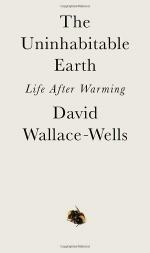
|
| Name: _________________________ | Period: ___________________ |
This test consists of 5 multiple choice questions, 5 short answer questions, and 10 short essay questions.
Multiple Choice Questions
1. In 2014, a toxic event struck Lake Erie, when fertilizer from farms in Ohio spawned an algae bloom that cut off drinking water for what city?
(a) Toledo.
(b) Cleveland.
(c) Detroit.
(d) Hamilton.
2. What is the current population of Jakarta (as of 2018)?
(a) 6 million.
(b) 8 million.
(c) 10 million.
(d) 5 million.
3. What percentage of the world's methane emissions do freshwater lakes account for?
(a) 16%.
(b) 25%.
(c) 12%.
(d) 5%.
4. How many acres did the Thomas Fire grow in one day in 2017?
(a) 10,000.
(b) 50,000.
(c) 25,000.
(d) 30,000.
5. Who wrote The Population Bomb?
(a) Irakli Loladze.
(b) Paul Ehrlich.
(c) E. O. Wilson.
(d) William Vollmann.
Short Answer Questions
1. Who was elected president of Brazil in 2018?
2. How much carbon is there currently in the air, according to the author in "Heat Death"?
3. Approximately how many acres did the Mendocino Complex burn in 2018?
4. How many people were killed around the world by inland flooding between 1995 and 2015?
5. When did the United Nations establish its Framework on Climate Change?
Short Essay Questions
1. What is carbon dioxide?
2. Describe the Thomas Fire. When and where did it occur and what damage did it cause?
3. What does "person-days" refer to and who coined this term?
4. What is atmospheric particulate matter?
5. What is "coral bleaching" and why is it important?
6. Who was Wallace Smith Broecker and why does the author reference him in Part I: Cascades?
7. What is the Kyoto Protocol? When was it signed?
8. How do wildfires affect greenhouse gas emissions?
9. What discovery did Irakli Loladze make regarding human nutrition and climate change?
10. What does the author project will happen in terms of wildfire growth by 2050?
|
This section contains 606 words (approx. 3 pages at 300 words per page) |

|




